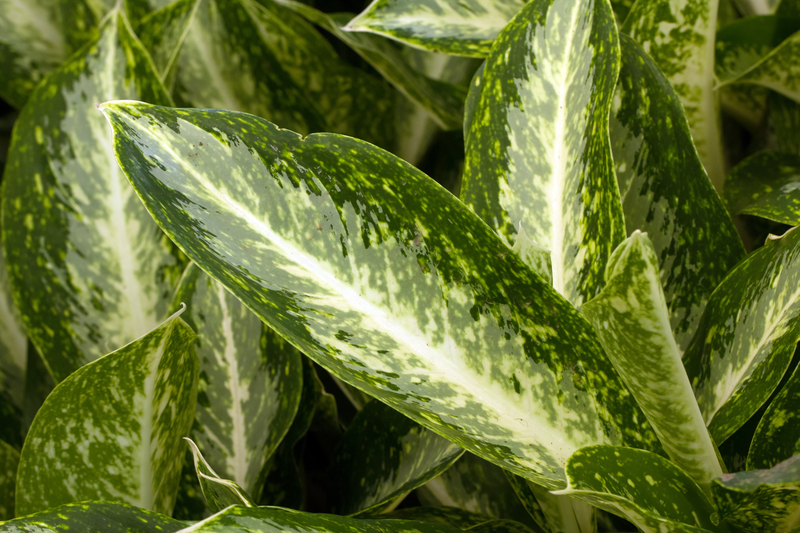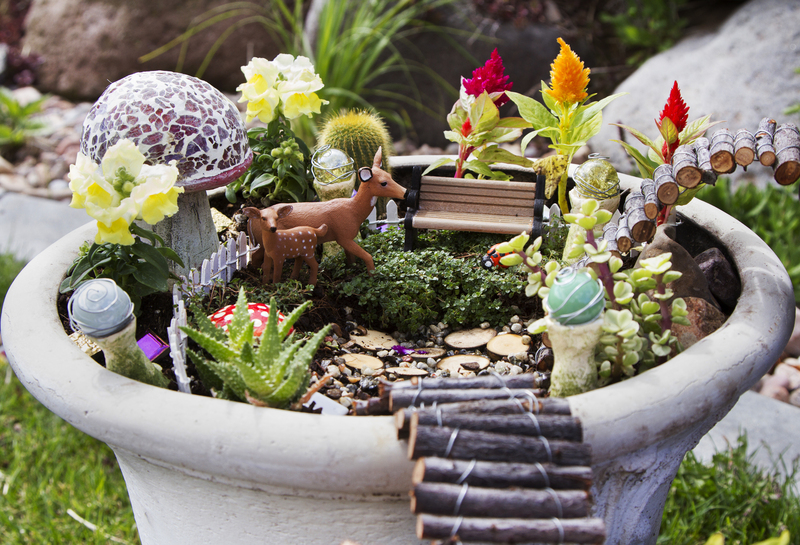Level Up Your Lawn: Key Care Tips for Those Just Starting Out
Are you ready to turn your bland patch of grass into a lush, vibrant oasis? Leveling up your lawn isn't as difficult as it might seem. Whether you're a complete beginner or simply want to refine your approach, understanding the basics of lawn care sets the foundation for long-term success. In this comprehensive guide, you'll discover essential and actionable tips tailored for new lawn owners. Let's dive in!
Why Lawn Care Matters: Benefits Beyond Beauty
A beautifully maintained lawn is much more than just good curb appeal. Healthy grass provides:
- Environmental Benefits: Lawns absorb pollutants, reduce heat, and prevent soil erosion.
- Recreational Value: A lush lawn is a perfect play area for kids and pets.
- Property Value Boost: Well-kept lawns increase your home's value and desirability.
- Mental Well-being: Scientific studies underline the positive effects of green spaces on stress and mental health.

Understanding Your Lawn: The Foundation for Success
Identify Your Lawn Type
The journey to an improved lawn begins with understanding the type of grass in your yard. There are two main categories:
- Cool-season grasses (e.g., fescue, bluegrass, ryegrass): Thrive in northern regions.
- Warm-season grasses (e.g., Bermuda, zoysia, St. Augustine): Prefer southern, warmer climates.
Pro Tip: Identify your grass type for tailored care advice and better results.
Test Your Soil
Soil is the building block of a great lawn. A simple soil test reveals:
- pH level (Ideal is 6.0 to 7.0 for most grasses)
- Nutrient deficiencies
- Soil composition (clay, sand, loam)
Why test soil? It saves you time, money, and disappointment by ensuring your fertilization efforts aren't wasted.
First Steps: Preparing Your Lawn for Growth
Clearing and Cleaning
Start by walking your lawn and removing debris like sticks, leaves, or trash. A clear, clean surface encourages stronger grass growth and makes maintenance tasks much easier.
Improving Soil Quality
- Aerate compacted soil in high-traffic areas using a core aerator. This allows water, nutrients, and oxygen to penetrate deeper.
- Top-dress with a light layer of compost to improve soil structure and microbiome health.
Reseeding or Sod Installation
If your lawn has bare spots, now is a great time to overseed or lay new sod. Ensure good seed-to-soil contact and consistently keep the area moist until new grass is established.
Lawn Watering Wisdom: Dos and Don'ts
How Much to Water?
- The average lawn needs about 1 to 1.5 inches of water per week, including rainfall.
- Water deeply and less frequently to encourage deep root growth (usually 2-3 times per week).
When to Water?
- Early morning is best (before 10 a.m.), reducing evaporation and disease risk.
- Avoid watering in the evening; it promotes fungal growth.
Tech Tip:
Invest in a simple rain gauge and a programmable sprinkler timer to prevent underwatering or overwatering.
Fertilizing Fundamentals: Feeding Your Growing Lawn
Picking the Right Fertilizer
- Choose a balanced, slow-release fertilizer appropriate for your grass type and the results of your soil test.
- Avoid quick-release, high-nitrogen products for beginners. They can burn your lawn and create excessive growth that's hard to mow.
How and When to Fertilize?
- Cool-season grasses: Fertilize in early spring and early fall.
- Warm-season grasses: Fertilize in late spring and through summer.
- Always follow application instructions and water in fertilizer for best results.
Master the Mow: Cutting for Health and Beauty
The One-Third Rule
Never cut more than one-third of the grass height at a time. Cutting lower weakens roots and encourages weeds.
Keep Mower Blades Sharp
A dull blade will tear (not cut) grass, leading to brown tips and increased disease risk. Sharpen your mower blades at least once per season for a clean, healthy cut.
Mowing Heights by Type
- Cool-season grasses: Keep heights at 2.5 to 4 inches.
- Warm-season grasses: Best between 1 to 3 inches, depending on the species.
Switch Up Mowing Patterns
Varying your mowing pattern helps prevent soil compaction and encourages upright growth.
Weed and Pest Management: Outsmart the Invaders
Proactive Weed Prevention
- Healthy, thick grass naturally suppresses weeds.
- Apply a pre-emergent herbicide in early spring to stop weeds before they sprout.
- Pull isolated weeds by hand or spot-treat with a natural or selective herbicide.
Pest Patrol
Watch for signs of grub damage (brown patches and loose turf) or anthills. Early identification and targeted treatment save your lawn from serious issues.
Beneficial Bugs are Friends
Not all insects are bad for your yard. Ladybugs and beneficial nematodes help control pests, while native pollinators are vital for your garden's overall health.
Seasonal Strategies: Adjust Care for Year-Round Success
Spring Lawn Care Tips
- Rake away winter debris.
- Apply a light round of fertilizer and pre-emergent weed control.
- Check irrigation systems and repair leaks.
Summer Lawn Action Plan
- Water deeply, especially during dry spells.
- Raise mowing height to retain moisture.
- Treat for pests early upon sightings.
Autumn Preparation
- Overseed thin areas and aerate the lawn.
- Apply a fall lawn fertilizer to strengthen roots for winter.
- Rake leaves regularly to prevent smothering.
Winter Lawn Wisdom
- Limit foot traffic on frozen grass to prevent damage.
- Keep lawn clear of debris to avoid diseases.
- Service your mower and tools for spring readiness.
Common Mistakes Beginners Make (and How to Avoid Them!)
- Overwatering or underwatering. Find a balance with consistent checking and use of rain gauges.
- Scalping the lawn. Cutting too short weakens your grass and opens the door to weeds.
- Ignoring the soil. Neglecting soil health limits all future improvements--test, amend, and feed regularly.
- Applying products incorrectly. Always follow the instructions, and less is often more.
- Neglecting mower maintenance. Sharp blades and clean equipment matter more than you think!
Essential Tools Every New Lawn Owner Needs
Invest in quality tools to make lawn care easier:
- Lawn mower (push or ride-on depending on yard size)
- Hose and sprinkler/irrigation system
- Soil test kit
- Rake and leaf blower
- Manual or powered aerator
- Spreader (for seeds and fertilizer)
- Pruners and shears (for overhanging limbs and edging)
Advanced Tips to Further Level Up Your Lawn
- Edge for Cleanliness: Use a physical or electric edger to keep borders tidy for a pro-level look.
- Mulch Grass Clippings: Leaving clippings on the lawn returns nutrients to the soil.
- Check for Thatch: A thatch layer thicker than 0.5 inches should be removed to improve airflow and water penetration.
- Consider Organic Lawn Care: Explore natural fertilizers and pest control to support a safer environment.

Frequently Asked Questions About Beginner Lawn Care
How often should I mow my lawn?
Mow regularly, about once a week during the growing season, adjusting as needed for grass growth rates and weather.
Should I use weed and feed products?
Weed and feed can be convenient, but they're less targeted. For beginners, separate fertilizer and weed prevention applications provide more control and better results.
How soon will I see improvements?
Consistency is key. Most lawns begin showing positive changes within a month or two of applying proper care routines.
Conclusion: Your Path to a Greener, More Beautiful Lawn
Mastering beginner lawn care doesn't require advanced knowledge or hours of daily effort. By building good habits, investing in essential tools, and being proactive with key maintenance tasks, you'll truly level up your lawn. Remember, every great yard started somewhere--and your journey starts today! Keep learning, stay consistent, and soon you'll enjoy the thick, green lawn you've always dreamed about.
Ready to get started? Bookmark this guide and come back whenever you need a refresher. Here's to a happier, healthier outdoor oasis!